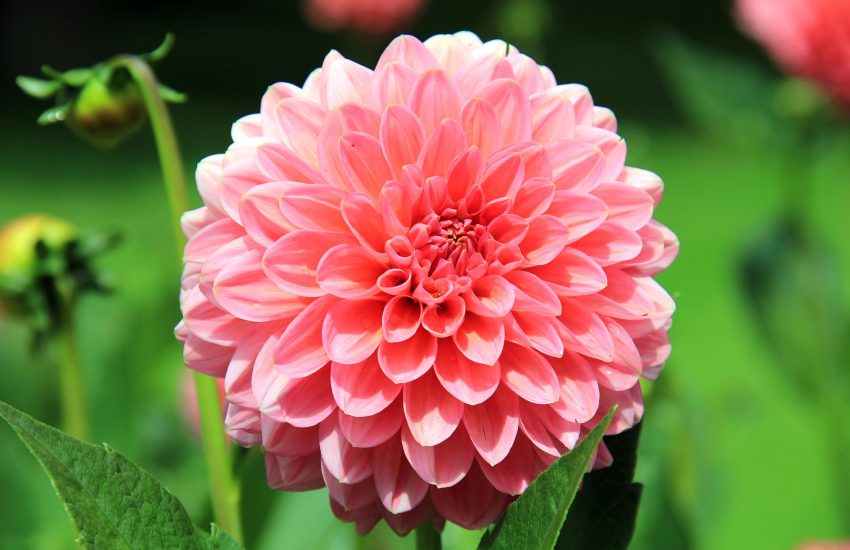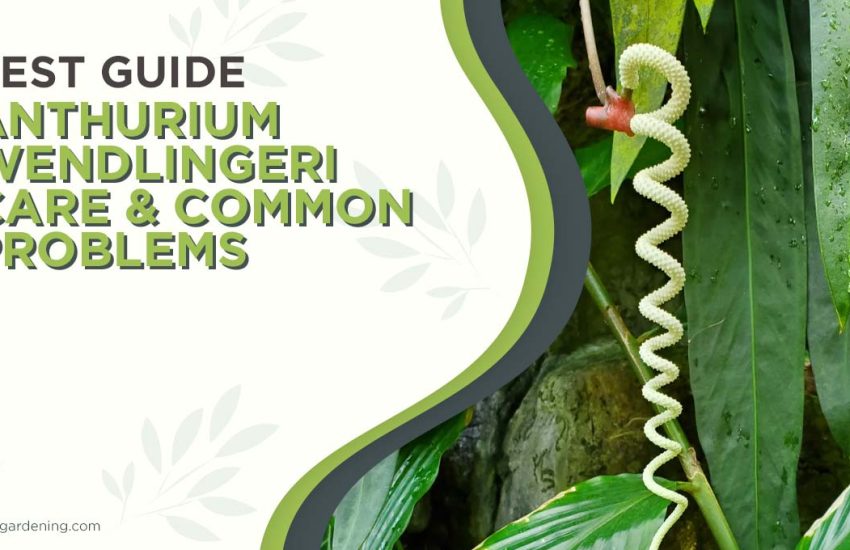16 Flowering Vines to Grow in Wisconsin
We’ve gathered the most popular flowering vines that thrive in Wisconsin’s continental and Great Lakes areas. Check them out to see if they’d be a good match for your garden or landscape.
1. Sweet Autumn Clematis (Clematis terniflora)
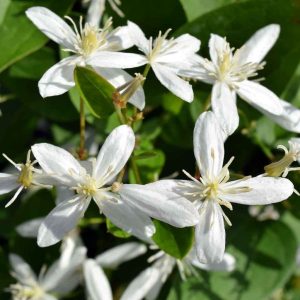
Sweet Autumn Clematis is a showy perennial vine that produces an abundance of sweet-smelling flowers in late summer. The daisy-like blooms are small, white, and plentiful. They sit alongside a decadent cover of dark green foliage. The flowers are followed by fuzzy seedheads. These spread like wildfire when they are left to the wind and the elements.
Sweet autumn clematis can grow to be 30 feet tall. However, most gardeners prefer to keep there at a more manageable 15 feet or so. Regular pruning and careful disposal of trimmings will help you to keep this aggressive spreader at bay. This plant thrives in most growing conditions and does not require much maintenance.
Sweet autumn clematis is considered invasive in some states, as it comes to us from New Zealand. It is not considered invasive in Wisconsin. Still, an aggressive plant such as this requires a gardener’s full dedication.
2. Virginia Creeper (Parthenocissus quinquefolia)
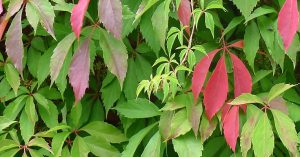
Virginia creeper, or devil’s darning needle, is a high-climbing vine that belongs to the grape family. This hardy deciduous plant produces an abundance of leaves and flowers. Its oblong foliage stems from a smooth trunk. The leaves grow in clusters and can be anywhere from 2 to 6 inches in length. The foliage is tear-shaped with serrated edges.
The Virginia creeper’s flowers are green and inconspicuous. They bloom between late spring and early summer. While they are not particularly showy, they are favored by native honeybees and birds. Their presence is followed by an abundance of grape-like berries. These enticing fruits are poisonous to humans, dogs, and other animals. Nevertheless, they are a mainstay of many native birds’ diets. Thrushes, vireos, and warblers are just a few of the birds that will travel far and wide to consume the berries of the Virginia creeper.
The Virginia creeper is native to most parts of eastern and central North America. It thrives during Wisconsin’s warm summers. The foliage dies back to the vine as early as the first frost.
3. Summer Cascade Wisteria (Wisteria macrostachya)
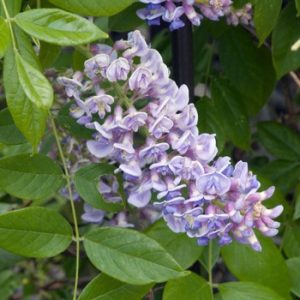
This precious vine grows well in USDA hardiness zones 4 through 8. We love that it is capable of blooming as many as three times in a single year. Summer Cascade Wisteria produces a cascade of showy flowers. The lavender blooms droop down from small stalks called racemes. A single flower cluster can be up to 1 foot long. The blossoms produce a pleasant fragrance. Their nectar and pollen are consumed by a long list of local pollinators.
The blossoms are accompanied by dark green leaves. When the flowers fade, the plant pops out clusters of intriguing seed pods. The vines can grow to be anywhere from 15 to 20 feet in length.
This cold-hardy vine is one of the few wisteria varieties that are capable of blooming in Wisconsin. It’s a decorative plant that willingly slinks over trellises, arbors, and pergolas. We love it as a privacy border and a shade cover.
4. Amerian Bittersweet (Celastrus scandens)
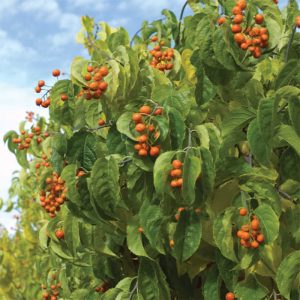
This fast-growing vine produces a colorful display of yellow and orange seed capsules in autumn. The berries are accompanied by tendrils of teardrop-shaped leaves. Daisy-like flowers preceded the berries. The flowers are short-lived. They boast white petals and yellow-orange centers. The vine portion of the plant twines itself around nearby structures. Keep in mind that this vine will grow aggressively if it is not pruned.
American bittersweet is a self-pollinating plant. As such, there’s no need for you to plant more than one vine. Nevertheless, it attracts a wide range of wildlife, including bees, butterflies, and moths. The plant’s roots and bark have been used as herbal remedies.
American bittersweet can grow to be 15 to 20 feet tall. It’s native to North America and does excellently in Wisconsin. The berries remain on the vine throughout winter. They’re a welcome addition to the state’s otherwise bleak winter landscapes. They’re also a much-appreciated source of food for foragers.
5. Smooth Carrion Flower (Smilax herbacea)
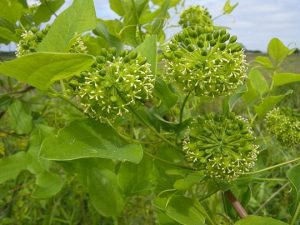
Carrion-flower is a perennial vine that is native to the tropics of South America. This delicate vine does not usually grow to be longer than 8 feet. It produces light green leaves and greenish-white flowers. The glove-like blooms produce an unpleasant smell. The putrid scent is said to attract all sorts of insects.
Plant yours in a spot that receives full or partial sun. Leave the plant’s berries for the local wildlife. The bluish-purple fruits are preferred by birds and small mammals. However, they are not safe for human consumption.
6. Wild Cucumber (Echinocystis lobata)
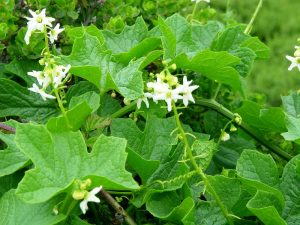
Wild cucumber, or Cucamonga manroot, is a broad-leafed perennial vine that grows especially well in Wisconsin. The plant has a large underground stem, star-shaped leaves, and spiky, green fruits. It generates a blanket of white flowers and green foliage in summer. The plant connects itself to nearby structures via small, spindly coils. A single plant can be anywhere from 25 to 30 feet long. However, the vine typically forms mats rather than shooting straight up.
Wild cucumber is a native plant of Wisconsin. You may even witness it growing wild along the state’s roads and rivers. Wild cucumber is not typically found at nurseries and greenhouses. That shouldn’t be enough to stop you from adding this intriguing plant to your garden.
8. Carolina Jessamine (Gelsemium sempervirens)
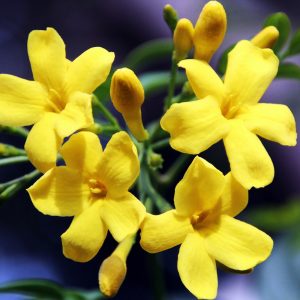
Carolina jessamine, or evergreen jasmine, is a perennial vine that is native to the southern United States. It prefers warm weather but does not struggle in Wisconsin. This plant’s yellow flowers have five stamens each. The plant’s blossoms arrive in early spring. Their fluted openings and sweet smell make them favorites of hummingbirds and other pollinators.
The plant’s leaves are glossy and green. The foliage is typically between 2 and 4 inches long and 4 to 5 inches wide. The leaves typically darken or die back during winter. Carolina jessamine is considered a perennial in most parts of the country. However, it cannot tolerate Wisconsin’s concurrent frosts.
Carolina jessamine can grow to be 12 feet tall. It should always be propagated alongside a supportive structure, such as a fence or a tree.
9. Riverbank Grape (Vitis riparia)
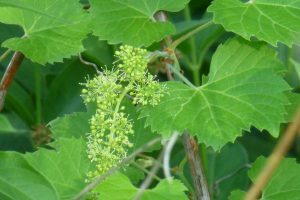
Riverbank grape is readily found throughout the wilds of Wisconsin. This woody perennial produces delicate fruits. A single vine can grow to be anywhere from 35 to 75 feet long. Each one produces hundreds of fragrant flowers and green leaves. The plant has a woody stalk. However, new growth is typically soft and green. The vine attaches itself to structures with the help of small tendrils. The plant’s flowers are green and inconspicuous. They tend to droop down as the plant transitions into its fruiting stage.
The plant’s blueish-purple berries arrive in late summer and early fall. Plant yours alongside a decorative arbor or small pergola, and you’ll have a sweet-smelling shade cover by autumn. The berries can be harvested and turned into wine or jam. Many gardeners leave theirs for the birds and other wildlife to enjoy.
Several other types of grapes grow in Wisconsin. These include a variety of American and French cultivars.
10. Purple Clematis (Clematis occidentalis)
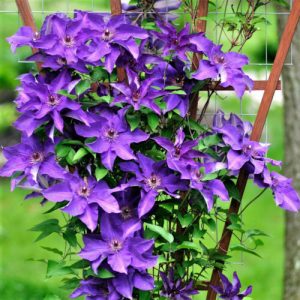
Purple clematis, or blue virgin’s bower, is a climbing vine that does well in USDA hardiness zones 4 through 9. This shade-loving perennial produces a woody vine and purple flowers. Its leaves grow in pairs at the end of alternating branches. The flowers can grow to be as big as 5 inches in diameter. They bloom from early summer to fall.
Purple clematis can be up to 20 feet tall. Its dense foliage makes an excellent privacy cover. The plant’s stems should be cut back in late winter or early spring. This will encourage the plant to form a thick blanket of foliage and flowers in the following spring and summer.
11. Limber Honeysuckle (Lonicera dioica)
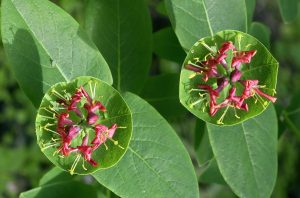
This flowering vine is native to Wisconsin. Its showy red flowers feature multiple yellow and white stamens. The fluted blossoms are a huge draw for native pollinators, including hummingbirds and butterflies. The flowers precede the plant’s blueish-red berries.
This plant usually grows to be no taller than 10 feet at full maturity. It produces multiple shoots and sometimes appeared matted. It prefers to be planted in partial or full shade. It can tolerate everything from moist to dry soil. We recommend that you use yours as a ground cover or container filler.
12. Climbing False Buckwheat (Fallopia scandens)
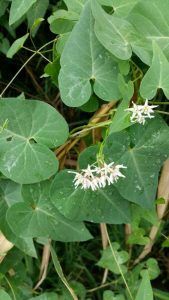
Climbing false buckwheat is a fast-climbing perennial with heart-shaped leaves and white flowers. This plant’s red stems love wrapping themselves around objects. They won’t hesitate to spindle their way around trees and other plants. However, most vines do not grow to be more than 16 feet tall.
The nectar and the pollen of this vine are favorite foods of small bees and flies.
13. Dutchman’s Pipe (Aristolochia macrophylla)
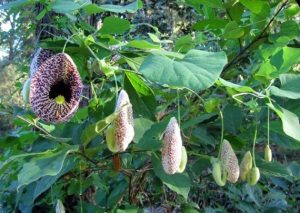
This climbing vine produces an intriguing collection of flowers and leaves. The pipe-shaped blooms are a mix of purple, green, and yellow. While the flowers are pleasant to look at, they do not smell all that good. They’re known to produce a scent that is much like that of rotting meat. Ironically, it’s this same smell that makes the plant so attractive to pollinators.
This vigorous perennial has no trouble surviving Wisconsin’s winters. However, its foliage is sure to die back to the vine in winter. Most vines are between 15 and 20 feet long. Their flowers typically bloom between May and June.
14. Swamp Fly Honeysuckle (Lonicera involucrata)
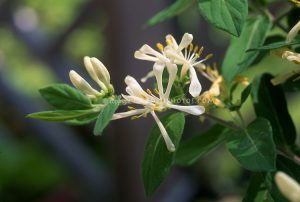
Swamp fly honeysuckle is an endangered plant that grows well in the swamps and woodland areas of Wisconsin. While you’re not going to find it at your local nursery, you should keep an eye out to see if it’s growing on your property. If you find it, you should take steps to ensure it thrives there.
Swamp fly honeysuckle produces reddish-green flowers and purplish-black fruits. The plant’s blossoms typically appear between May and July. The saucer-shaped blooms are preferred by flies, bees, and other small pollinators.
This perennial vine can tolerate full and partial shade. It does best when it’s propagated in moist, nutrient-dense soil.
15. Black-Eyed Susan Vine (Thunbergia alata)
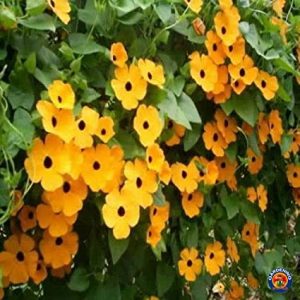
Black-eyed Susan vine is a midwestern mainstay that comes from the tropics of East Africa. The plant’s vibrant blooms boast orange-yellow petals and deep black centers. The blossoms grow alongside the plant’s leaves.
Since the black-eyed Susan vine can not tolerate frost, it dies off in late autumn and needs to be replanted in spring. A single vine can grow to be 8 feet long in one season. Plant it near a sturdy structure. Watch as it climbs its way up and spreads outward. Use yours as a privacy screen or wall cover. The high-contrast flowers are incredibly eye-catching.
Keep in mind that this plant is considered an aggressive perennial in places with frost-free climates. However, it does not need to be trimmed or cut back when it is propagated in the state of Wisconsin.
16. Comtesse de Bouchard Clematis (Clematis ‘Comtesse de Bouchaud’)
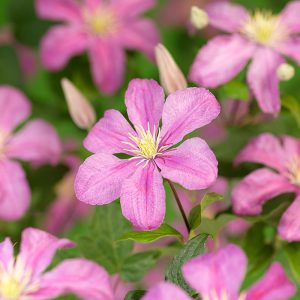
You’ve probably noticed that clematis is one of the best and most plentiful vine types in the state of Wisconsin. There are over 300 clematis cultivars that do well in the Midwest. Comtesse de Bouchard Clematis is a particularly decorative variety. It produces pinkish-purple blossoms and green leaves. It blooms between July and August. Its gorgeous buds are some of our favorite late bloomers.
Mature plants can grow to be 8 to 12 feet tall. They do best when planted in full sun or partial shade. They are easily trained to grow up trees and other structures.
Bottom Line
We hope you enjoyed our rundown of the top flowering vines to grow in Wisconsin. As you can see, there are plenty of trailing cultivars that do well in the state’s climate. Consider a plant’s flowers, foliage, size, expected growth rate, and other features before propagating it in your garden. Some vines make excellent climbers, while others prefer to spread along the ground. Think about your space and any preexisting plant species and structures. Imagine how a vine would fit and grow within the area.

